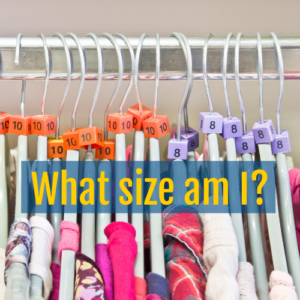From the country side to the city
I moved to the US in the shift between 2002/2003, 18 years ago, and that was quite a change. But before I share some of the things that made an impression on me let me tell you a bit about where I move from and to where.
In 2002 I was living in a small town called Staffanstorp in Skåne Sweden, At the time Staffanstorp had a population of 13,500 and an area of 2.56 sqm which gives us a density of 5.3 persons per square mile. This was a mixed town with farmland and a sleeper town where people commuted to other cities to work. It was very quiet and calm and I loved living in a small town like this.
I worked as an elementary teacher at the time in Malmö, the third-largest city in Sweden but in comparison with what I was going to experience after my move, it is small. Malmö had at that time a population of 253,000 and an area of 29.66 sqm which gives a density of 8.6 ppl/sqm

Why I left
So why did I leave this lovely place? That is easy to answer, I had met my husband-to-be, an American that I have had a long-distance relationship with, for about a year at this point, and we were now at the point to make the commitment. We have discussed if that would mean me moving to the US or him trying to move to Sweden, but for several reasons, the decision was that it was easier for me to move.
Very first impression
So at the end of 2002, I left the very dark and quiet Staffanstorp early one morning, traveled to Copenhagen in Denmark where I boarded a flight to London, UK. I had to spend a couple of hours at the airport in London before I boarded my second flight this time the destination was Philadelphia, USA. The trip took about 14 hours total from the point where I left Staffanstorp till I landed in Philly.
Lou, my husband-to-be, met me at the airport and this was quite a chock, Philadelphia was at my first impression, busy and loud. And no wonder, Philly had at this time a population of 5,242,000 or 37 persons/sqm. Almost 400 times the size of little Staffanstorp and 20 times the size of Malmö.
I was very tired, and we decided to drive home right away. Luckily we lived in a much smaller place in New Jersey called Gloucester twp. Which 2003 had a population of about 64,000 people or 2.8 ppl/sqm so this felt less overwhelming.
Every day things that was confusing
After a few days of acclimating myself, and just getting used to my new home, and socializing with my new family, it was time to start a “normal” life and at first, it was just the very small everyday things that struck me as very different.
Let’s talk about shopping, my first experience in one of these giant superstores like Walmart was a bit overwhelming. I remember how I was buying cereal, and standing in the cereal aisle, with all these boxes and boxes of cereal, all I could think was why so many??? Sure we have a few variations of cereal in Sweden as well but far from the number of different kinds here. This very first time ended with me not buying any cereal at all.

What dooes it cost and how much to buy
Another thing that was very confusing in the beginning was that the price of the items is not what you actually have to pay at the cash register. In Sweden, the taxes are already included in the price on the shelf and it is very easy to have an idea about how much you have spent. Over here the taxes will be added at the end of the transaction. Not a very big deal but it took some time to get used to.
Of course, a bigger problem was how much am I buying. In Sweden, we use the metric system and now I had to get used to the US imperial measuring system. How many grams is a pound? What is a liter in gallons? Things like that were not easy to figure out, especially since the grading in the imperial system is so different. The metric is more straight forward 1 kilogram is 1000 gram sense the prefix kilo means 1000. 1 liter equals 10 dl (deci means 1/10) and so forth everything in the metric system is built on the base 10.
Not only did I have to learn about 1 gallon = 4 quarts 1 quart = 2 pints or 4 cups 1 cup = 8 fluid ounces, but no I also had to learn that 1 pint in the US system = 2 cups or 16 fluid ounces while in the imperial system 1 pint = 20 fluid ounces. To this day this is all very confusing to me.
Another thing that took a while to get used to was the money. Of course, it is always confusing when you use another countries money for example if you are on vacation, but why did all the bills look exactly the same, just different faces on them? I was used to Swedish bills that varied in both size and colors, so this was very confusing to me.
Always open
Of course, the accessibility to alcohol in the regular stores or in all smaller liquor stores was a big difference coming from Sweden as I talked about in my episode the drunk Swede, but that was something I was aware of before moving here.
One thing I wasn’t prepared for was the accessibility to regular grocery stores. Lou worked at a TV news station at this time and worked late nights. The first time when he said to me let’s go to the grocery store now so we don’t have to go before I leave for work tomorrow, when he came home from work I thought he was kidding. This was 12:30 AM on a weekday. But no, our local grocery store was open 24/7. That has changed since then, much so during the pandemic, but I still think the accessibility for shopping here is much greater than in Sweden.
As I said we went to our local store, in the middle of the night, and of course, we drove there. This was very different, and hard to get used to. Not driving to grocery shopping, we did that in Sweden if we were to shop for the week or do another big haul, but often if I just was to buy a couple of things I walked to the store in Sweden, not so over here, you take the car everywhere, unless if you live in a city maybe.
There are several reasons for this, one is that the public transportation system here is not as well developed as in Sweden. Another reason is the gasoline prices. When I moved here 1 gallon of gas was just over one dollar per gallon, at the same time in Sweden we paid almost $5 per gallon. Today the difference is less but it is still almost 4 times higher in Sweden.

What size am I?
And before I leave the topic of shopping for this time, I must mention the problems I had with buying clothes over here, all sizes are different. For example, in Sweden, I bought size 40 in shirts, pants, underwear, etc, over here I had to learn everything over again. With clothes it was easy I could try them on but with underwear, it had to be by trial and error. For example, I can buy a top in size 12, but that did not mean that my panties would be size 12, oh no, they have to be size 8. And shoes, in Sweden I was a size 36 over here I am a 5. But I learned and now there is no problem.
One thing that you have here in most department stores is a section for petite, something I had never seen in Sweden, which is the same sizes as the other clothes but made for us that are on the shorter side, something I really love. No more sleeves hanging long below the tips of my fingers.
Final thoughts
There are so many more things I could talk about that were really different and somewhat difficult for me when I first moved here, but that will have to wait and maybe I make another episode if you would like to hear about it. Today I just wanted to share some of these everyday things that we seldom think about in our everyday life that can be hard to get used to if you come from another country to the USA.
I hope you enjoyed this episode, and if so that you would hit the subscribe button and come back next week. This is where I will end for today with the words we use in Sweden to say goodbye
Hej då




